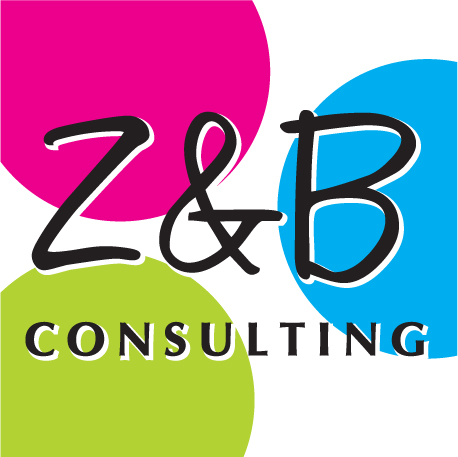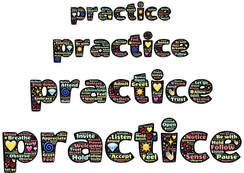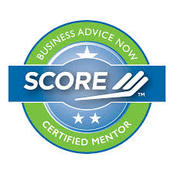|
In addition to networking, one strategy that has been really beneficial for me and my business is public speaking. If I can get in front of a group of people and talk about something that’s in my genius zone, I can almost always get at least one prospect if it’s a small group, and several prospects if it’s a larger group. Public speaking is like networking taken to the next level: instead of a 30-second elevator pitch, you get 20-30 minutes (or even longer) to talk about a topic that demonstrates your expertise. When done right, public speaking can be a great way to get more prospects, which should lead to more clients, so let’s go over some public speaking tips you can use to expand your visibility and grow your business. Public Speaking Tip #1: List Your Topics
You don’t necessarily need a speaker sheet right away, but there is a reason speaker sheets tend to have a section listing some of your topics: it’s because people want to make sure you can speak on a topic that will be relevant to their group before they invite you to speak. Public Speaking Tip #2: Identify Speaking GigsThe second of my public speaking tips is to start looking for places and organizations where you can do public speaking. Just like you need to be strategic about where you network and the prospects you call so you don’t waste time trying to convert people who will never be your ideal client, you need to be equally strategic about where you speak. Where does your ideal client hang out? What kinds of presentations would draw them in and encourage them to attend? Libraries can also be a great resource, and they usually pay for presentations, so that can be another great place to gain some recognition for yourself and your company while providing value to your community. Once you’ve done some public speaking, you’re ready to expand your visibility by speaking for larger groups and even getting paid to speak. Keep in mind you can also host your own event, such as a webinar or workshop, and “hire” yourself as the speaker. Public Speaking Tip #3: Practice Makes PerfectThe third of my public speaking tips is to practice your presentation by yourself or with someone you trust before presenting it in front of a crowd … even a small crowd. You don’t need to write out and rehearse your presentation word for word, but you should at least have a list of bullet points you want to cover in the course of the presentation. You can absolutely use notes during the presentation to make sure you don’t forget anything, but remember to keep it to bullet points, not a script.
Public Speaking Tip #4: Have a Call to ActionMy fourth and final public speaking tip is to remember that it’s basically marketing for your business, especially if you’re not getting paid for your presentation, and getting in front of all those prospects won’t do you any good if you don’t know how to convert them into customers, which is why you need a call to action. It should not be to buy something from you, but rather an invitation to learn more about you, such as signing up for your newsletter. Maybe you have a blog post or a checklist to go with the presentation you just did and people can go to your website to learn more. Think about the action they could take after the presentation that would make the most sense given the nature of the presentation and your buyer journey, then think of ways to encourage them to take that action. As a business coach, I love helping my clients identify strategies for getting in front of their ideal clients and turning those prospects into sales. Whether you need someone to help you leverage your public speaking skills, or you’re struggling with other challenges in your business, I would love to have a conversation to see if coaching would be right for you. You can schedule your FREE clarity call now to see how I can help you leverage the right strategies to move forward in your business.
0 Comments
If you’re not already familiar with the SWOT acronym, it stands for Strengths, Weaknesses, Opportunities, and Threats. A lot of people talk about conducting a SWOT analysis when starting or rebranding a for-profit business, but it’s just as important for nonprofits to take stock of these things in their industry as well. Like a for-profit business, nonprofits have a lot they want to accomplish for their communities but limited resources with which to accomplish them. A SWOT analysis can help you understand how to make the most of those resources so you can have the biggest possible impact on your community. Before we talk specifically about how to use a SWOT analysis for nonprofits, let’s take a closer look at what a SWOT analysis is: What Is a SWOT Analysis?Strengths are all the things you have working for your organization and its overall goals. This could include everything from your staff and volunteers to your strategic location to your partnerships with other organizations. Weaknesses are the things that could hinder your ability to reach your goals, such as a limited budget, a high turnover rate, employees who are overworked and undermotivated, etc. Opportunities are things happening outside your organization you can exploit to reach your goals. Did something happen in the news that could motivate people to donate to or volunteer at your organization? Keeping an eye out for opportunities your nonprofit can exploit is key to achieving your goals, but keep in mind they can be both ongoing and temporary opportunities. This is why you should do a SWOT analysis on a regular basis (once or twice a year) instead of just once. Threats are the external forces that could hold you back from achieving your goals. Changes to laws that regulate your nonprofit or changes in tax laws that could inhibit people’s willingness to donate are examples of things happening outside your organization that could impact your ability to reach your goals. Keep in mind, these are not excuses not to achieve your goals. Rather, by taking stock of these threats, as well as your strengths and opportunities, you can identify ways to succeed despite the threats facing your organization. How to Use a SWOT Analysis for NonprofitsNow that we have a clear idea of what a SWOT analysis is, let’s go over some ways you can use it to leverage your strengths and opportunities so you can mitigate your weaknesses and overcome your threats. Investigate Each Item in Your SWOT Analysis for NonprofitsIt’s not enough to identify your strengths, weaknesses, opportunities, and threats and call it a day. You need to investigate each item on your list so you can get down to its root cause. Why is it happening? How is it currently affecting your business? Are you taking full advantage of your strengths and opportunities? Have they already mitigated weaknesses and your threats? Ask AroundA SWOT analysis for nonprofits is something you should never undertake on your own. Get some team members together so you can all brainstorm items to put on your SWOT analysis. Even volunteers might have some things you had not previously considered because they get to see your organization from a different perspective. The more people you can include in a SWOT analysis for nonprofits, and the greater diversity of perspectives you can bring to the table, the stronger your analysis will be. Be Brutally Honest When Conducting a SWOT Analysis for NonprofitsIt can be tempting to focus on your strengths and opportunities, but your weaknesses and threats won’t go away just because you ignore them. Your strengths and opportunities are not there to make you feel good - they are there to help you mitigate weaknesses and threats so you can achieve your goals. Take Your TimeIf one of your threats is a lack of time to accomplish all the things on your to-do list, you’re not alone, but don’t use that as an excuse to not conduct a SWOT analysis for your nonprofit, or to rush through the process without fully investigating each item that pops up in your analysis. Investing the time to do a SWOT analysis for nonprofits can save you time and money for months, if not years to come as you identify strategies that aren’t working and programs that could use more resources so they can have a bigger impact on your community. Get Comfortable with the NumbersIf you’re a numbers person, this part shouldn’t be too difficult for you, but if you’re more verbally oriented and you tend to shy away from the numbers, it’s important to know that getting comfortable with your numbers is key to conducting a successful SWOT analysis for nonprofits. Only by looking critically at the numbers can you know for sure whether an investment is generating a return or just sucking up time and money. Be Willing to Think Outside the Box
Whether you need help conducting a SWOT analysis for nonprofits, or you’ve conducted one but you’re not sure how to make the most of the data, I can help. You can schedule your FREE clarity call now so we can discuss how I can help you make the most of your nonprofit’s strengths and opportunities to mitigate weaknesses and threats.
There’s a saying that it takes a village to raise a child, but what we hear less often is that the same goes for successfully starting and growing a business. Too often entrepreneurs feel like they have to do everything themselves - like they should have all the answers. But the truth is no one has all the answers, and not only can coaching open up your mind to new ideas and possibilities for your business, but the benefits of a mastermind group led by a coach can help you take your business to a whole new level. In addition to getting the benefit of the coach’s expertise, you also get to take advantage of the knowledge and experience of all the other entrepreneurs in the mastermind group. If you’ve been thinking about joining a mastermind group or a group coaching program, but you’re not sure it’s the right move for you, let’s take a look at some of the benefits of a mastermind group. A Mastermind Group Gives You Access to New PerspectivesSo often the solution is right in front of us, but we can’t see it because we’re too deeply immersed in the problem. Even people who work in a group setting often experience this problem because everyone in the group has started to think about the same things in the same ways, which blocks creativity and can prevent you from finding the solution to the problem.
A Mastermind Group Provides CamaraderieBeing an entrepreneur can be lonely because anyone who’s not an entrepreneur doesn’t really understand what it’s like. If your friends and family think you sit around in your pajamas watching TV all day, it can help to have a safe space to vent about your frustrations with a group of people who have been there and done that. A Mastermind Group Provides a Chance to Help Other Entrepreneurs
While I love working with my private clients one on one, I also love our group coaching calls because I love the camaraderie and the sense of community it builds. It is a coaching call, so I do most of the talking when answering questions, but everyone is free to participate in the chat and I always love seeing the creative solutions other people come up with for their fellow entrepreneurs’ problems. Many times someone will bring up an issue or a solution I wouldn’t have thought of, so if you think group coaching might be just what you need, you can find out more about everything that’s included in my group coaching program here.
Workers quit their jobs in droves in the middle of 2021, and while many companies held out with reduced staff, millions of employees are still refusing to return to work until things change. So what does that mean if you’re a nonprofit trying to find volunteers?
Understanding the Great Resignation Before Finding VolunteersFirst, we have to understand what the Great Resignation is really about. Yes, a lot of people quit their jobs because they were tired of being underpaid, but that has not been the case for everyone participating in the Great Resignation. Many others are simply overworked, burnt out, and tired of working jobs that don’t make them feel fulfilled, and that creates a great opportunity for nonprofits to step in and offer work that does make people feel fulfilled, even if it’s unpaid work.
Aside from salary, finding volunteers is not all that different from finding paid employees. People look online for volunteer opportunities. They ask their friends and family members if they know of any nonprofits trying to find volunteers. When they find a posting for a volunteer position they might be interested in, they’re going to investigate the nonprofit to make sure it aligns with their values, in addition to investigating the role and expectations for the volunteer position itself. This means you need to clearly communicate the mission of your nonprofit and have it prominently placed on your website so visitors can easily find it when they’re browsing your site. You also need to clearly communicate the tasks you expect your volunteers to complete, but also what kind of impact they’ll be making on their community through the volunteer position. Will they be helping animals find their furever home? Will they be helping guide at-risk youth towards constructive projects and opportunities for further education? People volunteer to make a difference in the world, so tell them what that difference will be. Partner with Smart Companies to Find VolunteersSome companies are digging in their heels and refusing to improve their work environment to attract more employees, but other companies are getting creative about the ways in which they’re attracting workers. Many have offered higher salaries, but others are looking for ways to create a company culture that’s in alignment with their employees’ values, and one of the ways some companies are doing that is by starting a volunteer program for their workers.
Companies that offer a volunteer program are a great resource for nonprofits trying to find volunteers, so see which companies in your area offer a volunteer program. If you can’t find any, or if you can’t find one that’s a good fit, pitch a volunteer program to one of your local companies and offer to partner with them to create it. There’s no reason nonprofits and for-profit companies can’t work together to survive the Great Resignation. As a business coach who specializes in helping nonprofits, one of my sweet spots is helping nonprofits find volunteers as well as staff. If you need help recruiting works (paid or otherwise) for your nonprofit, schedule your FREE clarity call now to find out how I can help you.
Our society values hard work, and while there is something to be said for putting in the effort, we also need to value down time and self care. No one can do everything, but it can often feel like we have to do everything, because if we don’t, who will? This is especially true for teachers who were overworked before the pandemic, and have been struggling with changing regulations and anxiety around staying safe and keeping their kids safe from an incredibly contagious virus we didn’t know much about. While talking about selfcare amidst all this chaos might initially feel self indulgent, this is the perfect time to change the narrative around burnout and selfcare. I can’t think of a better way to do that than providing tips for avoiding burnout and making time to take care of yourself. Get Rid of Perfectionism
Stop Helping Others Before Helping Yourself
Recognize Your Strengths and WeaknessesOne of the downsides to trying to do it all is that we often try to do things we shouldn’t be doing because they aren’t our strong suit. The result is we end up wasting a lot of time trying to do something we don’t do very well (or trying to teach ourselves how to do something and then attempting to do it) when we could save a lot of time by recruiting someone who is good at it while we focus on doing what we do best (what I like to call our “genius zone”). Allow Others to Provide Support
Keep in mind this goes for your personal life as well as your professional life. If your spouse offers to help out around the house, let them help. If you have kids that are old enough to do some chores, let them do some chores while you put your feet up and watch TV or read a good book. Step Away & Take BreaksTaking breaks is actually the secret to getting more done. When we’re constantly trying to be productive, we wear ourselves out and experience burnout, and then we don’t work as effectively as we do when we’re well rested. By stepping away every now and then to take a break, not only will you feel better, you’ll also get more done because you’ll be more focused when you do sit down to work. Avoiding burnout can be easier said than done, but I hope these tips have provided a good starting point for you to think about the ways in which you may be overextending yourself, and some ideas you can implement to step back and take some time for yourself. As a business coach, my sweet spot is helping my clients learn to automate and delegate as much as possible so they can spend more time in their genius zone and less time on the activities that don’t make them feel fulfilled. If you think you might need more help learning to work smarter and not harder, let’s chat.
|
Why Morsels?Business advice, 
Please tell me how you found me
Archives
June 2022
Categories |
|
Office: 815-524-4307
|

















 RSS Feed
RSS Feed




